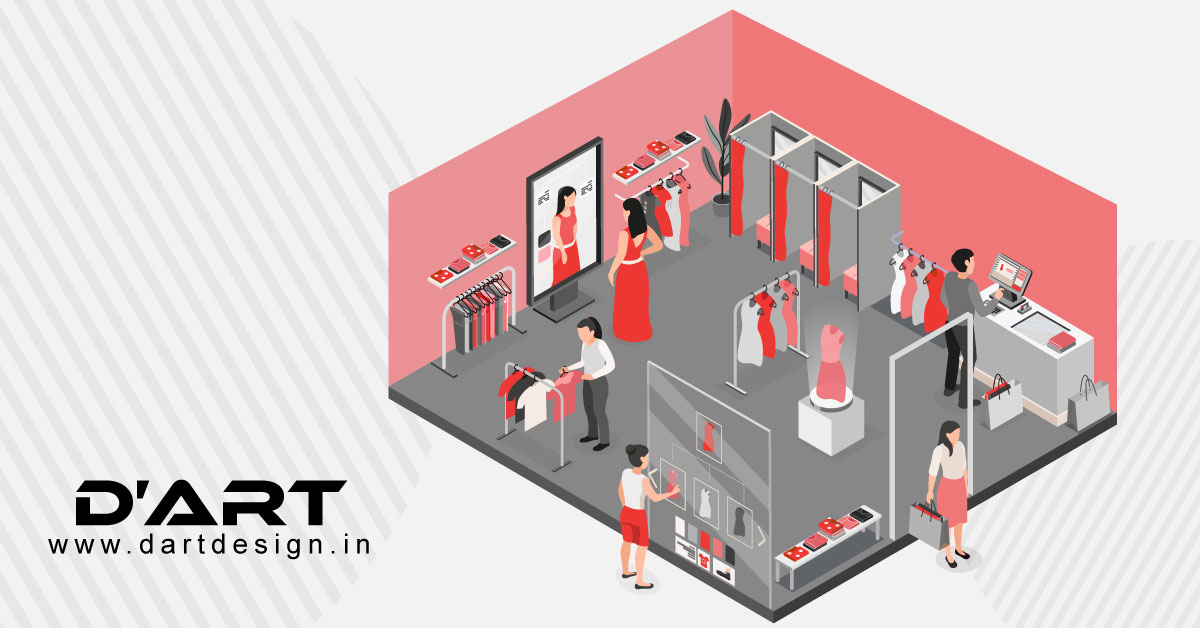A store design is a multifaceted discipline, having so many layers that should be in alignment to make it a success. There is a saying that holds true in the world of retail; “You never get a second chance to make a first impression”. First impressions matter, the moment a customer walks the door, they’ll have a thought that’ll influence their shopping behaviour. And that thought would be the initial impression your store. A facade can entice passerby’s to stop and take a closer look, that should be your storefront where it all begins. A creative signage, eye-catching window displays and intriguing lighting will pique the curiosity and draw potential customers.
Understanding Customer Flow
An efficient store layout optimizes customer flow by
making it easier for them to explore your offerings. Once inside the customers
should find it easy to navigate your store. Grids with strategic placements are
crucial, the customers should pass by a wide array of other products on their
way in order to encourage purchases and extended shopping trips.
Store layouts can take various forms, whether it’s a grid, loop or free flow; each layout serve a different purpose.
Grid layouts are efficient and straightforward, loop layouts encourage exploration; free-flow layouts are ideal for boutiques as the can have an element of surprise.
Organizing your store into distinct zones or categories is essential. Each zone should have a specific theme or purpose. Clear signage and visual cues can help customers in finding what they want. For a more intuitive shopping experience, colour-coded signs, aisle markers and department banners can be used.
Role of Aesthetics and Detailing
While functionality is crucial, the aesthetics play an eloquent role in store design. The ambience you create profoundly impacts the customer experience; lighting, colour schemes and decor, all these factors influence the overall atmosphere. Bright and well-lit spaces are ideal for highlighting the product details, whereas a warm and inviting lighting setup will make the space look cozy and comforting, encouraging them to linger.
The colour scheme can either make or break the look. While choosing the colour palette, you can choose colours that have the ability to evoke emotions. The colours red and orange can create a sense of urgency, making a buzz; whereas the warmer tones of blue and greens can provide a soothing and relaxing effect.
A well sought out store design is the one that has each element carefully considered, down to the smallest of details. The choice of shelving will impact on the way your products will be perceived, high-quality fixtures will make the merchandise look more premium while the cheap ones will downgrade it. The placement should be strategic. Segregate eye-level shelves for high margin products as they are the prime real estate. Incorporating end-cap displays for showcasing promotions and new arrivals will prove to be valuable.
Incorporating technology and the bottom line
In the digital age, technology is now an integral part of store design. Incorporating a seamless multichannel experience is what we need for a better outcome. Interactive displays, mobile apps, product recommendations and virtual try-on will take your store on a higher notch.
This can include adding options like in-store pickups
for online orders and the ability of checking product availability across all
channels.
In-store events, demonstrations and workshops will boost the customer engagement as well as create a sense of community that will draw customers back to the store.
The design should not be static and must evolve with the changing trends and preferences. Assessing and updating on a regular basis can keep the designs fresh and relevant. Have room for flexibility and refresh the decor to reflect the current styles.
It is important to view the expenses on a store design as an investment because it truly is an investment that’ll have an impact on the future of your store. It not only makes your store look good but also makes it work better for both you and your customers. A well-designed store will result in a higher foot traffic, higher sales and a loyal customer base.
Store design is a powerful tool that can shape the perception and interaction of the customers with the brand. It is a journey, the moment a customer sets their foot in the store to the way they navigate through the aisles, every aspect plays a role in the shopping experience.

Comments
Post a Comment